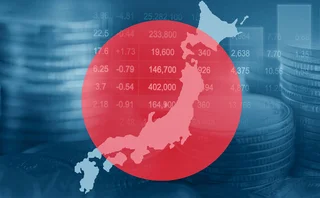
BaFin: German banking clean-up could involve €816bn of assets
Up to €816 billion of assets could be involved in a potential clean-up of the banking system, according to a report by the German finance regulator Bundesanstalt fur Finanzdienstleistungsaufsicht (BaFin).
The confidential report was leaked to German daily newspaper Süddeutsche Zeitung on April 24. The €816 billion total includes €268 billion of Hypo Real Estate's assets, €101 billion for Commerzbank, €84 billion for Westdeutsche Landesbank and €21 billion for Deutsche Bank, along with several other Landesbanks.
BaFin has launched criminal investigations into who might have leaked the report to the press. A spokesperson for BaFin said the report was not intended to be public information; the data in the report was produced for Germany's ministry of finance at its request.
BaFin said the figures in the report were its own estimations of bank assets calculated from several surveys it had sent out it banks over various periods. They were not intended to be measurements of toxic assets only, but of both troubled and liquid, stable assets that could taken off banks' balance sheets as part of a government-led clean-up of the financial sector or banks' own decisions on changes in business strategy.
Germany's ministry of finance, the central bank and the SoFFin financial stabilisation fund will deliver a plan to the cabinet in May on how to deal with the country's toxic assets. Media reports anticipate this will take the form of a 'bad bank' model, where a government entity will take troubled assets off banks' balance sheets to stabilise the sector.
See also: Sharing the pain
The Volkswagen squeeze
Only users who have a paid subscription or are part of a corporate subscription are able to print or copy content.
To access these options, along with all other subscription benefits, please contact info@risk.net or view our subscription options here: http://subscriptions.risk.net/subscribe
You are currently unable to print this content. Please contact info@risk.net to find out more.
You are currently unable to copy this content. Please contact info@risk.net to find out more.
Copyright Infopro Digital Limited. All rights reserved.
You may share this content using our article tools. Printing this content is for the sole use of the Authorised User (named subscriber), as outlined in our terms and conditions - https://www.infopro-insight.com/terms-conditions/insight-subscriptions/
If you would like to purchase additional rights please email info@risk.net
Copyright Infopro Digital Limited. All rights reserved.
You may share this content using our article tools. Copying this content is for the sole use of the Authorised User (named subscriber), as outlined in our terms and conditions - https://www.infopro-insight.com/terms-conditions/insight-subscriptions/
If you would like to purchase additional rights please email info@risk.net
More on Risk management
Revealed: the three EU banks applying for IMA approval
BNP Paribas, Deutsche Bank and Intesa Sanpaolo ask ECB to use internal models for FRTB
FICC takes flak over Treasury clearing proposal
Latest plans would still allow members to bundle clearing and execution – and would fail to boost clearing capacity, critics say
Buy side would welcome more guidance on managing margin calls
FSB report calls for regulators to review existing standards for non-bank liquidity management
Japanese megabanks shun internal models as FRTB bites
Isda AGM: All in-scope banks opt for standardised approach to market risk; Nomura eyes IMA in 2025
Benchmark switch leaves hedging headache for Philippine banks
If interest rates are cut before new benchmark docs are ready, banks face possible NII squeeze
Op risk data: Tech glitch gives customers unlimited funds
Also: Payback for slow Paycheck Protection payouts; SEC hits out at AI washing. Data by ORX News
The American way: a stress-test substitute for Basel’s IRRBB?
Bankers divided over new CCAR scenario designed to bridge supervisory gap exposed by SVB failure
Industry warns CFTC against rushing to regulate AI for trading
Vote on workplan pulled amid calls to avoid duplicating rules from other regulatory agencies







